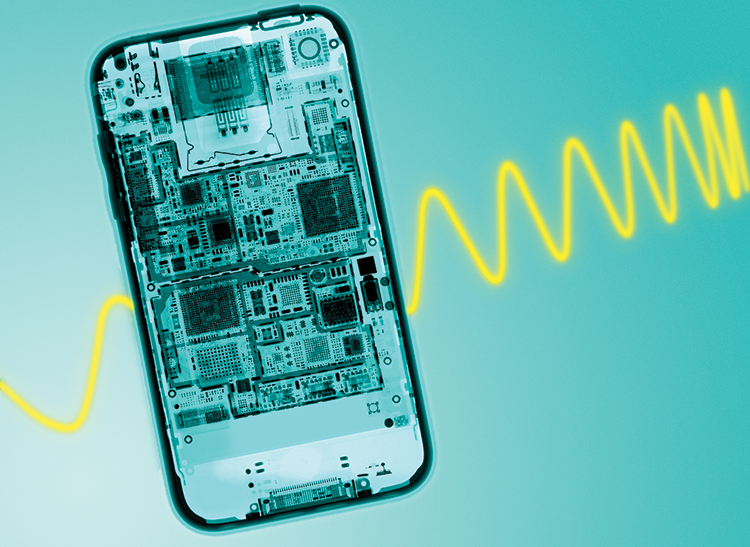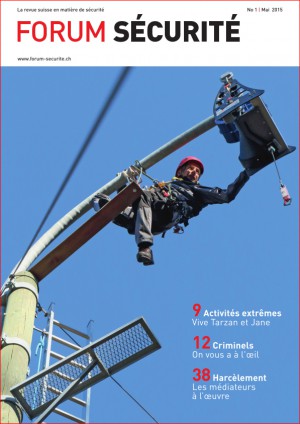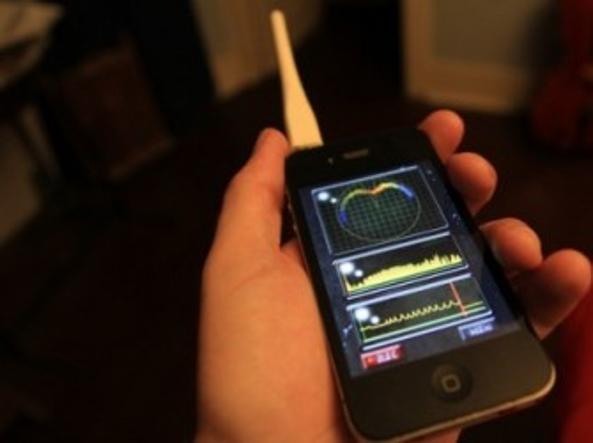Does Cell-Phone Radiation Cause Cancer?
24 settembre 2015 – “www.consumerreports.org”, by David Schipper
[L’articolo pone l’accento sulla ormai innegabile esistenza di prove concrete riguardo alla pericolosità dei telefoni mobili, che ancora gli organi preposti alla salvaguardia della salute dei cittadini continuano ad ignorare, non prendendo provvedimenti adeguati come informare la popolazione sui rischi che corre e soprattutto adottare il principio di precauzione.]

As the debate over cell-phone radiation heats up, consumers deserve answers to whether there’s a cancer connection
But not everyone is unconcerned. In May 2015, a group of 190 independent scientists from 39 countries, who in total have written more than 2,000 papers on the topic, called on the United Nations, the World Health Organization, and national governments to develop stricter controls on cell-phone radiation. They point to growing research—as well as the classification of cell-phone radiation as a possible carcinogen in 2011 by the International Agency for Research on Cancer, part of the WHO—suggesting that the low levels of radiation from cell phones could have potentially cancer-causing effects.
“I think the overall evidence that wireless radiation might cause adverse health effects is now strong enough that it’s almost unjustifiable for government agencies and scientists not to be alerting the public to the potential hazards,” says David O. Carpenter, M.D., director of the Institute for Health and the Environment at the University at Albany in New York and one of the authors of the recent letter to the U.N. and WHO.
Some countries have taken steps to protect users, at least when it comes to children. For example, France, Russia, the U.K., and Zambia have either banned ads that promote phones’ sale to or use by children, or issued cautions for use by children.
The city council of Berkeley, Calif., has also acted. In May 2015, it approved a “Right to Know” law that requires electronics retailers to notify consumers about the proper handling of cell phones. CTIA-The Wireless Association, a trade group, is now tring to block that law from going into effect, as it successfully did after San Francisco passed its own Right to Know law five years ago.
Of course, scientific seesawing like that doesn’t provide a lot of clarity or confidence for the 90 percent of American adults and roughly 80 percent of teens who report having a cell phone. So how concerned should you be about cell-phone radiation? Consumer Reports’ health and safety experts conducted a thorough review of the research and offer some guidance.
What Is Cell-Phone Radiation, Anyway?
Your phone sends radiofrequency, or RF, waves from its antenna to nearby cell towers, and receives RF waves to its antenna from cell towers when you make a call or text or use data. The frequency of a cell phone’s RF waves falls between those emitted by FM radios and those from microwave ovens, all of which are considered “non-ionizing” forms of radiation. That means that—unlike radiation from a nuclear explosion, a CT scan, or a standard X-ray—the radiation from your phone does not carry enough energy to directly break or alter your DNA, which is one way that cancer can occur. (FM radios and microwaves don’t raise alarms, in part because they aren’t held close to your head when in use and because microwave ovens have shielding that offers protection.)
How Could the Radiation From Cell Phones Cause Cancer?
At high power levels, RF waves can heat up water molecules (which is how microwave ovens work). Scientists used to focus their concerns on the possibility that such heating of human tissue, which is mostly water, might damage cells. In fact, the FCC’s test of cell-phone emissions—which was set in 1996 and which all phones must pass before being allowed on the market—is based on that effect.
But most experts now aren’t concerned about that possible tissue heating caused by RF waves. Instead, what’s worrying some scientists are newer lab studies suggesting that exposure to cell-phone radiation can have biological effects without raising temperature.
In 2011, researchers at the National Institutes of Health showed that low-level radiation from an activated cell phone held close to a human head could change the way certain brain cells functioned, even without raising body temperature. The study did not prove that the effect on brain cells was dangerous, only that radiation from cell phones could have a direct effect on human tissue.
RF waves from cell phones have also been shown to produce “stress” proteins in human cells, according to research from Martin Blank, Ph.D., a special lecturer in the department of physiology and cellular biophysics at Columbia University and another signer of the recent letter to the WHO and U.N. “These proteins are used for protection,” Blank says. “The cell is saying that RF is bad for me and it has to do something about it.”
And just this year, a German study found that RF waves promoted the growth of brain tumors in mice, again at radiation levels supposedly too low to raise body temperature. The U.S. National Toxicology Program is now running an animal study of its own, exposing rats and mice to low-dose radiation. Results are expected in 2016.
What Do Cancer Studies in Human Populations Show?
The research above describes some lab and animal studies that looked at how cell-phone radiation might cause cancer or affect the body in other ways. But we also reviewed studies that investigated whether cell phones increased brain-cancer risk in humans.
We focused on five large population studies, plus follow-ups to those studies, that investigated that question. Together the studies included more than a million people worldwide, comparing cell-phone users with nonusers.
Though some findings were reassuring, others do raise concerns. Specifically, three of the studies—one from Sweden, another from France, and a third that combined data from 13 countries—suggest a connection between heavy cell-phone use and gliomas, tumors that are usually cancerous and often deadly. One of those studies also hinted at a link between cell phones and acoustic neuromas (noncancerous tumors), and two studies hinted at meningiomas, a relatively common but usually not deadly brain tumor.
Though those findings are worrisome, none of the studies can prove a connection between cell phones and brain cancer, for several reasons. For one thing, cell-phone use in certain studies was self-reported, so it may not be accurate.
In addition, the findings might be influenced by the fact that the study subjects owned cell phones that were in some cases manufactured two decades ago. The way we use cell phones and the networks they’re operated on have also changed since then. Last, cancer can develop slowly over decades, yet the studies have analyzed data over only about a five- to 20-year span.
Are Today’s Phones Safer?
Cell-phone designs have changed a lot since the studies described above were completed. For example, the antennas—where most of the radiation from cell phones is emitted—are no longer located outside of phones near the top, closest to your brain when you talk, but are inside the phone, and they can be toward the bottom. As a result, the antenna may not be held against your head when you’re on the phone. That’s important because when it comes to cell-phone radiation, every millimeter counts: The strength of exposure drops dramatically as the distance from your body increases.
Perhaps our best protection is that more people today use phones to text instead of talk, and headphones and earbuds are growing in popularity. On the other hand, it’s also true that we use cell phones much more than we used to, so our overall exposure may be greater.
So Should I Stop Using My Cell Phone?
No, Consumer Reports does not think that’s necessary. But we do have some concerns.
“The evidence so far doesn’t prove that cell phones cause cancer, and we definitely need more and better research,” says Michael Hansen, Ph.D., a senior scientist at Consumer Reports. “But we feel that the research does raise enough questions that taking some common-sense precautions when using your cell phone can make sense.” Specifically, CR recommends these steps:
- Try to keep the phone away from your head and body. That is particularly important when the cellular signal is weak—when your phone has only one bar, for example—because phones may increase their power then to compensate.
- Text or video call when possible.
- When speaking, use the speaker phone on your device or a hands-free headset.
- Don’t stow your phone in your pants or shirt pocket. Instead, carry it in a bag or use a belt clip.
A Call for Clarity
The substantial questions raised regarding cell phones deserve some clear answers:
• The Federal Communications Commission’s cell-phone radiation test is based on the devices’ possible effect on large adults, though research suggests that children’s thinner skulls mean they may absorb more radiation.
• Consumer Reports agrees with concerns raised by the American Academy of Pediatrics and the Government Accountability Office about the tests, and thinks that new tests should be developed that take into account the potential vulnerability of children.
• We think that cell-phone manufacturers should prominently display advice on steps that cell-phone users can take to reduce exposure to cell-phone radiation.
This article also appeared in the November 2015 issue of Consumer Reports magazine.


